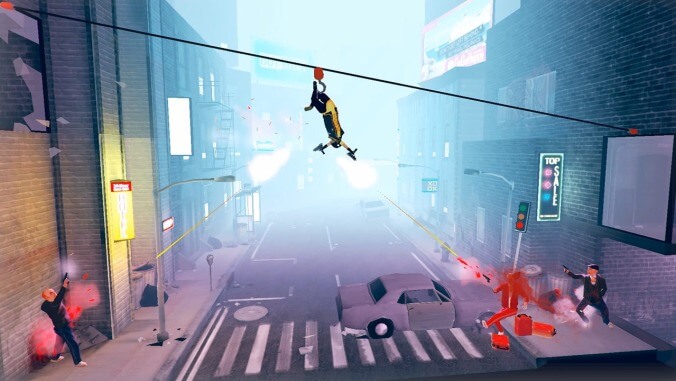Why is video game slo-mo so frequently a no-go?

Every Friday, A.V. Club staffers kick off our weekly open thread for the discussion of gaming plans and recent gaming glories, but of course, the real action is down in the comments, where we invite you to answer our eternal question: What Are You Playing This Weekend?
I remember Max Payne.
And no, that’s not just the title of Mark Wahlberg’s least successful autobiography (and also probably a lie, if Mr. Wahlberg is being completely honest with himself). It’s also an acknowledgement of a time when “Bullet Time”—that is, giving players the ability to slow down time for themselves, the better to execute all sorts of dive-y, shoot-y antics—was still something of a novelty in video games, powered by an abundance of reverence for The Matrix, new innovations in game engine design, and a tough-as-nails New York cop with a tendency to talk in reams of purple prose and meandering undercover exposition.
Since Remedy’s blockbuster crime shooter inelegantly propelled its way into the market back in 2001—crashing through a bunch of windows and probably crushing a desk or two in the process—there have been a lot of games that have trucked with slow-motion as a major or minor mechanic. (Heck, even Mega Man messed with it in his most recent console outing.) In 2019 alone, there have been two games to make central use of screwing with the flow of time, both over in the indie scene: Katana Zero, released a few months back, and Devolver Digital’s My Friend Pedro, which came out on PC and the Switch this week. Which leads me to a somewhat paradoxical question. Sure, slow-motion is great and all. But does it have to be so damn slow?
Take Pedro, a 2D side-scroller that sees you play as an anonymous, gun-toting weirdo accompanied by his best friend, a talking, floating banana. (Memes have so fucking much to answer for, I swear.) Other than bullets and health, the game’s primary resource is focus, which allows you to slow down time, getting the drop on your gun-wielding horde of foes. Try to get by without this time-based assist and you won’t even make it through the first few levels; the game’s health system isn’t realistic, by any means—very few real-world bullet wounds are fixed by picking up a big box with a heart printed on the side—but that doesn’t mean you can stand up to a full real-time machine gun barrage from a room full of baddies.
So why am I so tempted to try? Why do I keep trying to ignore that life-saving button, in favor of diving into the fray in real-time and trying to keep myself alive the old-fashioned way, before all this new-fangled chronomancy set in? Why do I keep thinking Pedro would be a far more satisfying game if it didn’t have its central mechanical hook?
Slow-mo systems like this one are designed to make you feel like a badass, emulating the mid-fight mental calculations that are constantly Zach_Galifianakis_The_Hangover_Math.GIF-ing their way through the brains of a Neo or a John Wick. (Really, any of the Keanu canon.) And yet, there’s something strangely stultifying about them more often than not, about watching your avatar slowly spin through the air, waiting for their gun to glacially reload. It helped kill the first Matrix game, back in 2003; it’s not for nothing that the actual John Wick game is being done as a turn-based strategy game, freeing players from trying to match Baba Yaga’s reactions entirely. There’s just something mortifying about having an edge this big, but still getting lit up by your opponents regardless.
None of which is to say that Pedro is a bad game, because it’s not. It’s ideal for the Switch, in fact, allowing you to get in a quick dose of cinematic, John Woo-y action, then put it back down before the ennui sets in. Still, there’s a reason that none of the early-generation games that captured the imaginations of so many of us touted slowness as one of their virtues. (Stanley the Snailboy says: “Gotta go slooooooooooooow.”) Indulge in it too much, and slow-motion starts to make your brain feel slow; it robs games of the joys of kinetics and motion, makes backflips and dive-rolls feel commonplace. My Friend Pedro is a fun little shooter. It just needs to be a little bit less of a Payne.